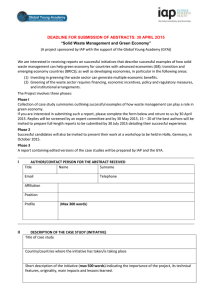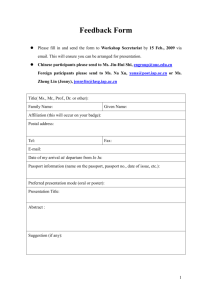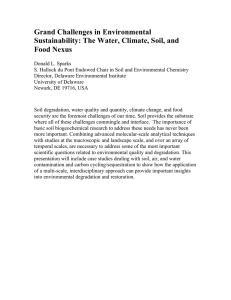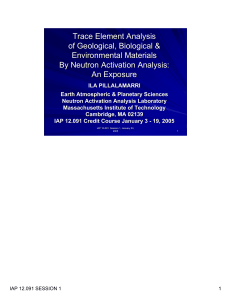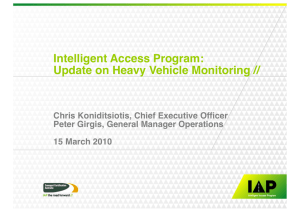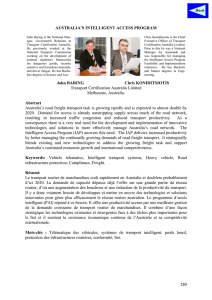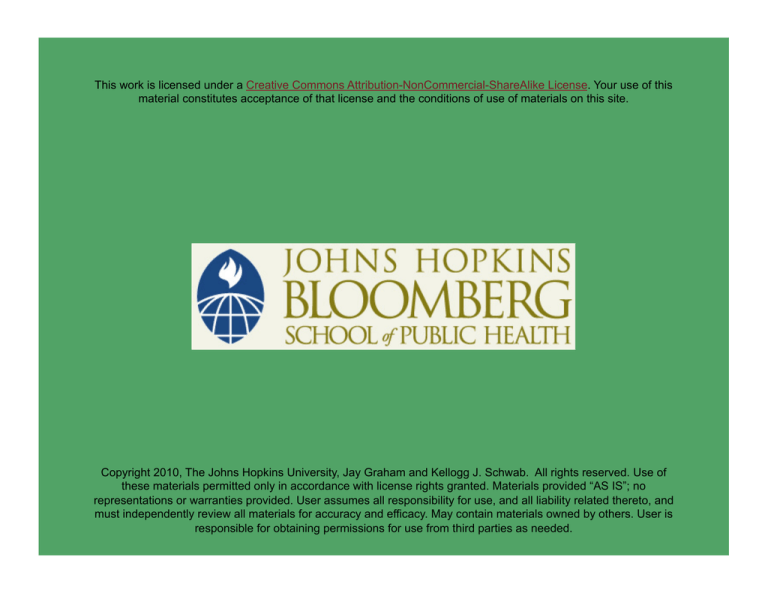
This work is licensed under a Creative Commons Attribution-NonCommercial-ShareAlike License. Your use of this
material constitutes acceptance of that license and the conditions of use of materials on this site.
Copyright 2010, The Johns Hopkins University, Jay Graham and Kellogg J. Schwab. All rights reserved. Use of
these materials permitted only in accordance with license rights granted. Materials provided “AS IS”; no
representations or warranties provided. User assumes all responsibility for use, and all liability related thereto, and
must independently review all materials for accuracy and efficacy. May contain materials owned by others. User is
responsible for obtaining permissions for use from third parties as needed.
Section D: Ecological and Public Health
Implications of Animal Waste on Our Food and the
Environment—Overview and Background
Kellogg J. Schwab, PhD
Johns Hopkins University
IAP Environmental Degradation
IAP (industrial animal production)
contributes to the degradation of …
-
Soil
-
Nutrient overloading
Air
Chemical and biological
contaminants
Greenhouse gas emissions
Water
-
Nutrients
Pathogens
Ecosystem alterations
IAP can create significant negative
public health effects
Photos source: USDA Natural Resources Conservation Service.
3
Causes of IAP Environmental Degradation
Monoculture crop production for animal feed
- Unsustainable water usage and soil degradation associated with
feed production
Pesticide production and application
Transportation of feed and animals
Sub-therapeutic use of antibiotics
Animal waste
- Large volumes of animal waste produced in localized areas
-
Lack of appropriate waste management and disposal
4
U.S. Livestock Farms and AFOs
1. More than 50 percent of U.S. livestock is raised on 5 percent of
farms
-
“EPA and the USDA are committed to a comprehensive national
approach to ensure that manure and wastewater from AFOs are
properly managed”
2. EPA and USDA rely on voluntary programs (e.g., technical
assistance, training, funding, and outreach) and on regulatory
programs to ensure that AFOs establish appropriate site-specific
comprehensive nutrient management plans (CNMPs) that will
protect the environment and public health
Source: EPA.
5
IAP New Business Model Brings New Challenges
More than 50 percent of soil and sediment erosion
More than 35 percent of U.S. pesticide usage
From 70 to 80 percent of antibiotic usage
Thirty percent of nitrogen and phosphorous loading to drinking
water resources
Photos source: USDA Natural Resources Conservation Service.
6
Source/Effect Paradigm
Source-to-effect diagram illustrating the role of IAP facilities as a
source of hazardous agents whose emission impacts environmental
quality of air, water, and soil, and creates conditions for biological
exposure and adverse health outcomes in affected animal and
human populations
Source: Adapted from Walker et al. (2005).
7
Antibiotic Use in Animal Feeds
Nearly 70 percent of antibiotics sold in the U.S. are used in animals
Administered at sub-therapeutic levels for growth promotion
Poorly absorbed by the animal gut, from 25 to 75 percent excreted
unaltered in feces
The hundreds of millions of tons of animal waste produced in the
U.S. per year are a large source of antibiotics and antibioticresistant bacteria in the environment
8
Zoonotic Microorganisms
World Health Organization definition of zoonoses: “those diseases
and infections which are naturally transmitted between vertebrate
animals and man”
9
Groups of Microorganisms
Bacteria
- E. coli, Campylobacter, Salmonella
Parasites
- Cryptosporidium, Giardia
Viruses
-
Hepatitis E virus, noroviruses
Helminths
Prions
10
Two Key Concepts to Keep in Mind
1. Size of the microorganism
2. Resistance to environmental degradation and chemical inactivation
11


